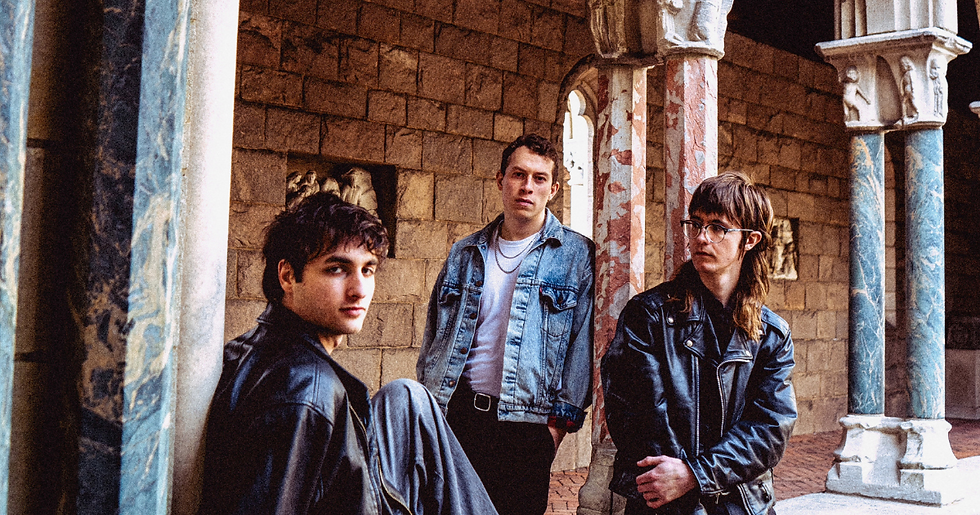Six Reasons to Listen to Chavela Vargas Right Now
- Wayne Moots
- Oct 22, 2020
- 3 min read
Updated: Dec 17, 2020

A young runaway
Due to a creativity that was sometimes more important than fact, the details of her early life are unclear. What we do know is she ran away from her native Costa Rica to Mexico City as a teenager and began her singing career by the 1940’s. She originally worked as a maid but also sang in cantinas and on the streets before earning her fame. She was "discovered" while singing on Calle Insurgentes by Josè Alfredo Jimènez, one of Mexico's most prolific songwriters and one of Vargas' closest friends.
FU gender roles
She lived in a time where a woman’s role was birthing/raising children and being a good catholic. Instead, she wore suits, smoked cigars and matched men drink-for-drink. Sometimes she would even perform with her pistol handy. She lusted after other famous women (it’s rumored she took home Ava Gardner after singing at Elizabeth Taylor’s third wedding in 1957), and used female pronouns when singing about love in her songs.
Reinvention of a genre
Ranchera music is very similar to American Country, a typically male dominated genre full of songs about heartbreak and the struggles of life. Typically associated with mariachi bands today, she made it something exclusively her own. She broke it down to its core elements: a guitar and a voice, and she was incredibly successful because of it. She sang classic Ranchera songs in a way that could devastate like no other. Her version of Paloma Negra (trust me on this one), is so full of heartache and pain it’s palpable. Her voice just crushes the heart in the best way.
An openly gay and beautiful life
She had many affairs with other famous women and was always unashamed of it. Her sexual orientation was never hidden, though she didn't officially come out until she was in her 80’s. As I previously said, she sang these classic Ranchera songs, written by men over losing a woman, and refused to change the pronouns making it gay as hell. Her existence rebelled against the rigidly Catholic society whose structure depended on conformity. She helped pave the way for moden queer liberation movements and is still respected as a queer icon. Some of her lovers include Frida Kahlo, Dolores Olmedo, María Félix and more.
One hell of a comeback
Due to her alcoholism, she took a break from music for over 15 years, starting in the early 70’s. During this time she was nursed back to health by an Indian family who didn’t know who she was, and at some point was made a shaman. After overcoming her own personal hell she began performing again in Coyoacán in 1991 at the age of 72, where she was “re-discovered” by a representative of Turner Publicaciones while Pedro Almodóvar began using her music in his films. She began performing all over the world again and in 2002 she published a tell-all autobiography in which she officially came out as a lesbain, and in 2004 she performed at Carnegie Hall. At the time of her death in 2012 at age 93, she had re-established herself as a queer icon and musical genius.
Relationship with a ghost
Federico Garcìa Lorca was a gay Spanish poet and playwright from Andalucía who was murdered by firing squad during the Spanish Civil War. In 1993 Vargas stayed in the Residencías de Estudiantes in Madrid, where Lorca once lived. One day the story goes, Lorca’s ghost appeared as a bird perched on her window sill. After that fateful meeting she began speaking with his spirit at night, even claiming that she was staying in the same room he used to. This relationship inspired one of her last albums, La Luna Grande, released the year she died, which was a brilliant combination of his poems and her music. This relationship later inspired a documentary by Rubén Rojo Aura called El Ruiseñor y La Noche.
Artwork by Justine Ceby





Kaiser OTC benefits provide members with discounts on over-the-counter medications, vitamins, and health essentials, promoting better health management and cost-effective wellness solutions.
Obituaries near me help you find recent death notices, providing information about funeral services, memorials, and tributes for loved ones in your area.
is traveluro legit? Many users have had mixed experiences with the platform, so it's important to read reviews and verify deals before booking.